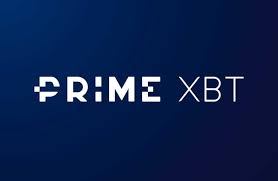How does MT4 integration work, and what is important in liquidity management? We speak to Gold-i’s Chris James and Matthew Smith
“We are currently investing a lot of time and resources into data analysis and visualisation to help a brokerage understand the data behind their trading operations more easily” – Chris James, Product Development Manager, Gold-i

The continued evolution of important technology which is instrumental to today’s trading environment ensures that key components that are instrumental to electronic trading firms are up to the minute, provide top quality connectivity between retail platform and live market, and of course maintain pace with the rapidly changing dynamics that are omnipresent within electronic trading, a sector which is so advanced in its development that many of the systems that power the financial markets infrastructure of the future will be attributed to the developments of today.
Trading platform integration and liquidity management solutions company Gold-i is a very poignant example, the company dedicating a substantial percentage of its time to research and development, and ensuring that its professionals have the remit to continue to provide a top quality execution environment.
Recently, the company promoted Chris James to Product Development Manager, and recruited former Fidessa executive Matthew Smith to the position of Global Head of Support.
Today, FinanceFeeds spoke in detail to Chris James and Matthew Smith in order to gain a detailed perspective on their vision and responsibilities at Gold-i.
Commencing, FinanceFeeds addressed Mr. James, explaining that liquidity management systems and the ability for brokerages to reliably conduct their orders to liquidity providers and prime brokerages is a very instrumental part of today’s business. Gold-i, as one of the three major providers for the entire world’s retail FX liquidity management has massive responsibility in this respect. What are the key facets that are essential when providing top level support to brokerages to ensure seamless operation of systems?
Chris James: Reacting quickly to any issue facing the brokerage is our number one priority. This involves having the capability to handle our clients’ needs as well as having a 24/7 support mechanism. At Gold-i, our high levels of support have been strengthened even further recently by the opening of our office in Shanghai, which helps to provide additional support during out of hours. We have also appointed Matthew Smith as our new Head of Support in our UK office.
When a new development, or upgrade to existing system is launched, what Quality Assurance procedures are carried out and does Gold-i use specific existing brokerages with the Gold-i system as a model for testing upgrades to bridges and integration technology?
Chris James: We currently have a team of 4 Quality Assurance Analysts working in our UK office. When new developments, products or enhancements are launched, they have been through a rigorous internal QA procedure.
For example, when releasing a new bridge integration, before carrying out the integration partner’s conformance test we will have completed an internal testing process spanning 2-3 weeks to ensure the product is operating as required. This is usually far more detailed than the conformance tests and provides a smooth transition into production environments.
In some cases, it can be an excellent test to run the new product against client data, for example when releasing our new MAM Pro upgrade we can run this against real client data locally before running on a production environment.
You have been heavily involved in developing Gold-i Matrix products and MAM Pro. How were these developed and what value do they add to brokerages?
Chris James: Our Matrix product suite has been an important step forward for us. We developed Matrix 1 to allow an MT4 brokerage to offer out their own liquidity. This was driven directly by client demand and is proving to be popular. We then moved into a complex, multi-phase project for our Matrix 2.0 modular liquidity management system.
Matrix 2.0 offers multiple routing rules, providing brokerages with options to suit their requirements. We are very excited to start delivering this product and believe it will be an exciting few years for Gold-i as the future phases of Matrix 2.0 will be driven by client requirements.
In terms of the MAM Pro, we have been working collectively on it for around 12 months, and it has been developed as a result of investigating and analysing client feedback. The Gold-i MAM Pro offers brokers more flexibility and functionality than ever before, and is most importantly, even more resilient to misuse. We are now starting to develop our MAM offering for MT5, which will require a whole new set of algorithms and logic based on the difference between the two platforms.
The FinTech element of today’s electronic brokerage business is critical. Do you spend a considerable amount of time investigating new methodologies and designing products for the future that will lead the industry?
Chris James: At Gold-i, we are always looking ahead. Our development of products such as Matrix, and Visual Edge are excellent examples of this, and we hope with the launch of our Matrix 2.0 offering we can evolve the way the retail landscape operates once again. We are currently investing a lot of time and resources into data analysis and visualisation to help a brokerage understand the data behind their trading operations more easily.
What is the largest business-critical consideration for brokerages today with regard to ensuring an effective liquidity management and integration system?
24/7 resilience is becoming even more critical than ever before, whether this is trying to avoid a lack of liquidity from a particular source at a given time, or ensuring not to overload a system under increased operation, such as during a news announcement.
We are constantly looking for ways to help alleviate these problems, with solutions such as our advanced price throttling algorithm available within our Bridge to help smooth out those peak inputs, or our primary/secondary offering within our new Matrix 2.0 product which allows brokerages to have a seamless failover to a secondary liquidity source to avoid any disruption in provision to their end clients.
Mr. Smith then explained to FinanceFeeds the importance of supporting broker clients with aplomb, with FinanceFeeds touching first upon the transferrable knowledge that can be applied to leading the international support operation at Gold-i.
What knowledge and experience can you bring to Gold-i’s client base, coming from a large institutional provider, Fidessa, to a leading-edge specialist technology developer for the electronic trading industry?
Matthew Smith: If my previous role at Fidessa has taught me anything, it’s that it doesn’t matter if the customer is either a single trader or a tier-one bank, support is always a high priority. Individual clients can expect your complete focus at all times and it’s a delicate balance to be able to constantly have to manage those expectations to ensure the whole client base gets the best coverage overall. Conveying this message back to the client in a constructive manner is key to ensuring that the support service runs smoothly.
Prioritisation is also a major factor here, not only for the analysts investigating issues that are raised, but also for the customers themselves to ensure their business critical problems are worked on first and resolved in a timely manner. In my experience it helps to break down issues into both impact and urgency to make it easier for the analysts and clients to understand what needs to be focused on first, which incidents are time critical and whether something needs to be escalated before it has a greater impact.
Another challenge is ensuring that we give a consistent service to clients even if they have a bespoke system set up. No two clients are ever the same and although their core requirements may be similar, there are always specific business needs which need to be taken into account. Having analysts designated as ‘client champions’ (that have a more intimate knowledge of a particular client’s set up and nuances) gives a more personalised service and also provides the opportunity for the analysts to provide client presentations on the system set up, both internally and externally.
Being able to execute orders on an ongoing basis without interruptions is a core aspect of many brokers today. How does Gold-i’s support procedure ensure uninterrupted service, even at times when upgrades are being rolled out, new platforms are being adopted by brokerages and any outage by a third party such as the aggregator or platform firm could take place?
Matthew Smith: We strongly advise our clients that any changes or upgrades are thoroughly tested in a demo or UAT (User Acceptance Testing) environment first before promoting them to a production environment. We follow a structured change management process internally at Gold-i for our managed clients and we encourage our other clients to do the same. This minimises risk and potential problems that could result in system unavailability at crucial times.
There is also an emergency change process in place that can be instigated to make changes directly into a live environment should a time critical issue or request be raised, but this is limited to disaster situations and requires full management approval before it is instigated.
In terms of outages, many of these are out of our direct control. Our managed service monitoring can immediately alert us of application issues, network level issues and outages caused by third parties (such as a crashed service or network outages). However, in the majority of cases it is our clients’ responsibility to get in touch directly with the third party providers themselves in order to resolve such issues. We do however offer assistance and can get involved if requested in order to resolve any problems as quickly as possible.
Does Gold-i use systems such as ‘ghost’ in order to remotely reinstall products from the office rather than from customer site, thus reducing downtime should an error occur?
Matthew Smith: We don’t currently use automated remote deployment software (by choice at present). It may be something that we use in future to reduce any risks when clients perform installations and upgrades themselves.
We are normally granted direct access to client servers remotely and as part of our Managed Services offering a member of the Gold-i support team can access a client’s server remotely and configure the software to the client’s required settings. This allows us to keep a close eye on configuration at all times and perform post installation and upgrade checks to confirm that everything is running smoothly. Due to the way our software is configured, installation and upgrades are streamlined and easy to deploy so that there is minimal overhead and downtime – even when performing the task manually.
What interesting developments are on the horizon in regards to support service at Gold-i?
Matthew Smith: I am keen to look at ways of continually improving client service and plan to use my ITIL-based background to tweak some of the current processes and procedures. This will help to reduce the current overhead on the support team whilst also ensuring that our clients are kept informed about the status of any of their issues at all times.
I do have some exciting future plans in regards to how our own ITSM helpdesk solution can be used to automate some of our processes and provide useful metrics as feedback for continual service improvement. This will also allow us to provide similar, albeit tailored, metrics back to our clients on a regular basis so they themselves are able to monitor issue progress and feed it back to their own management teams.









